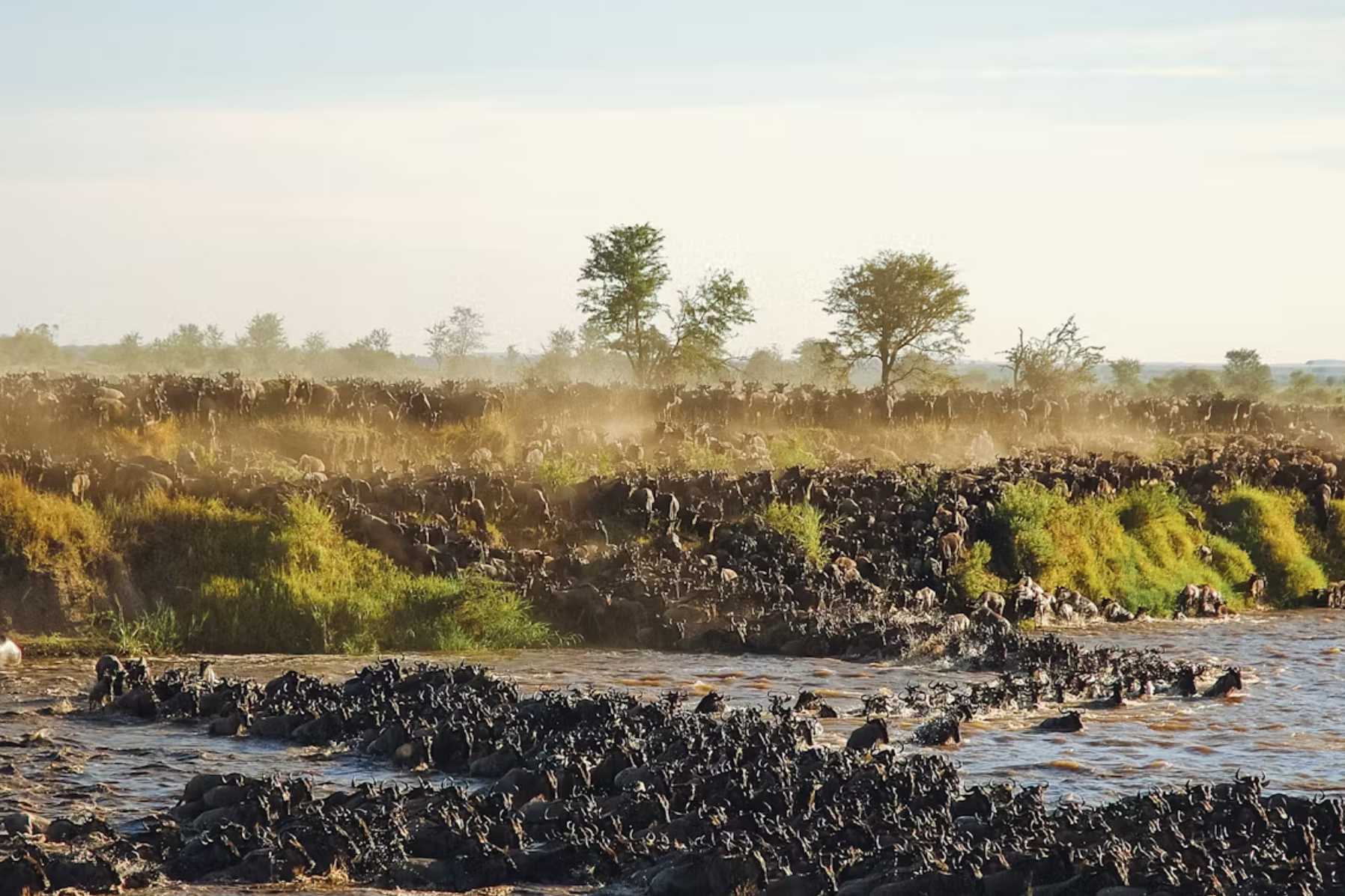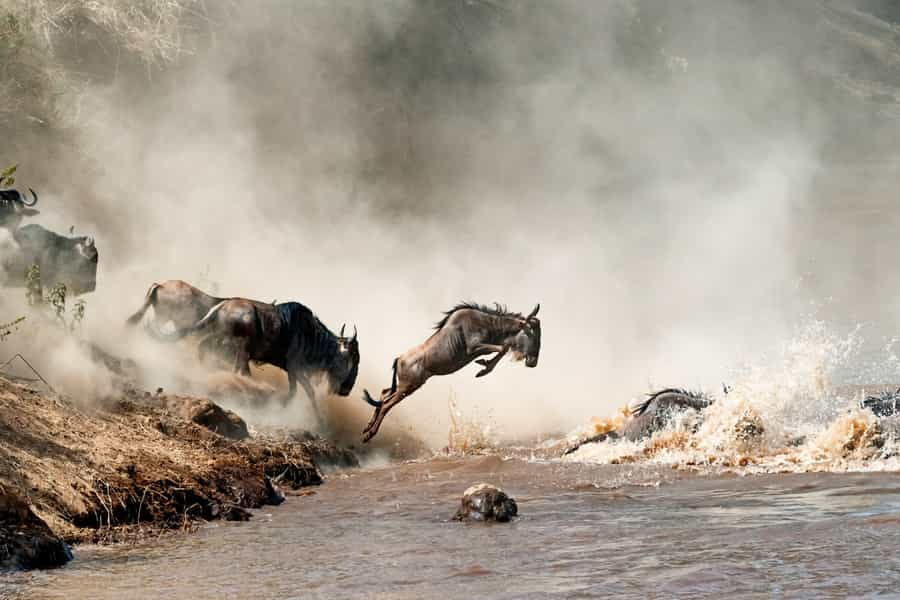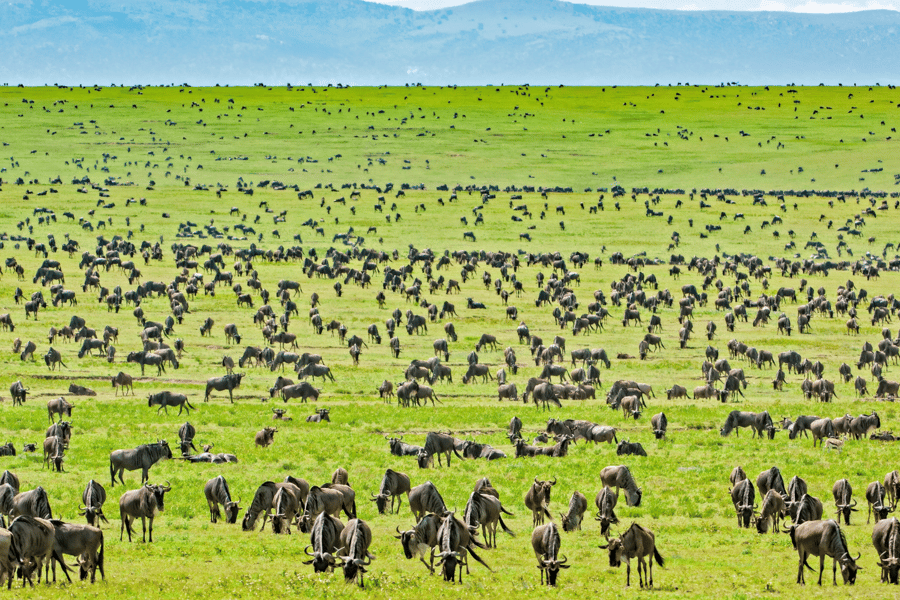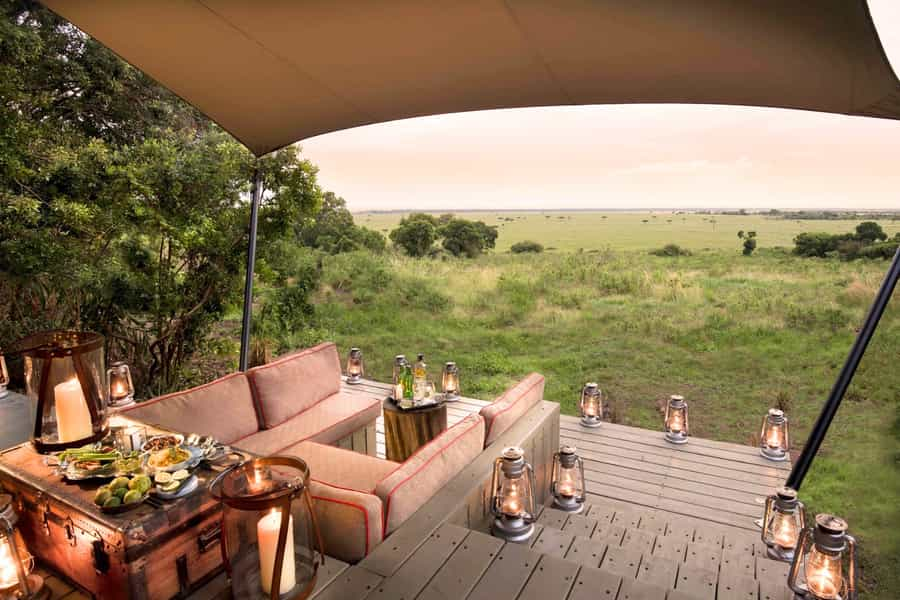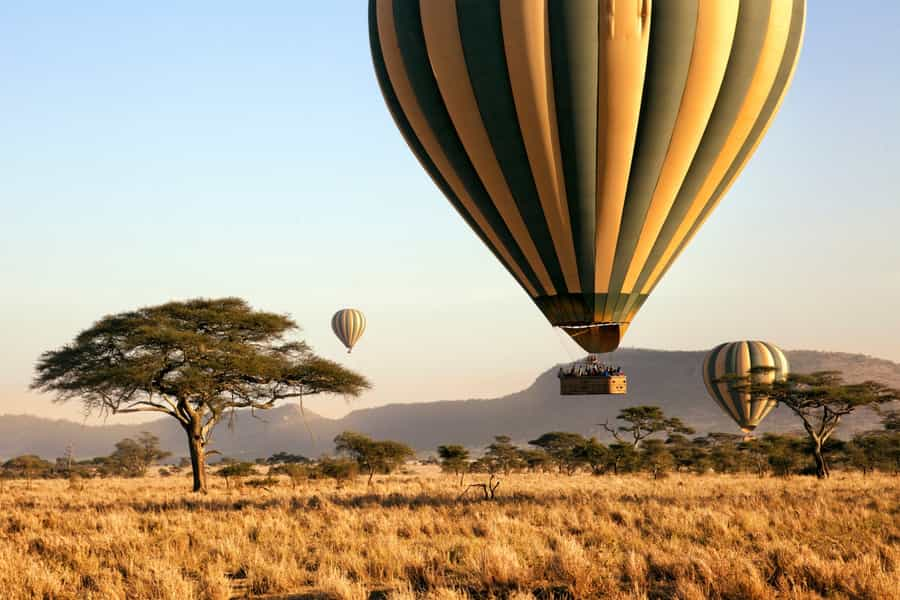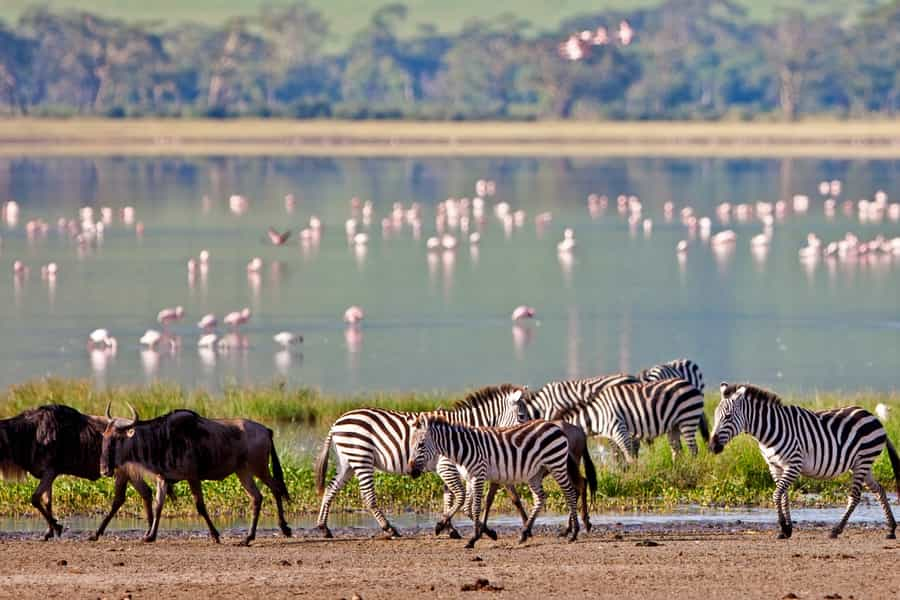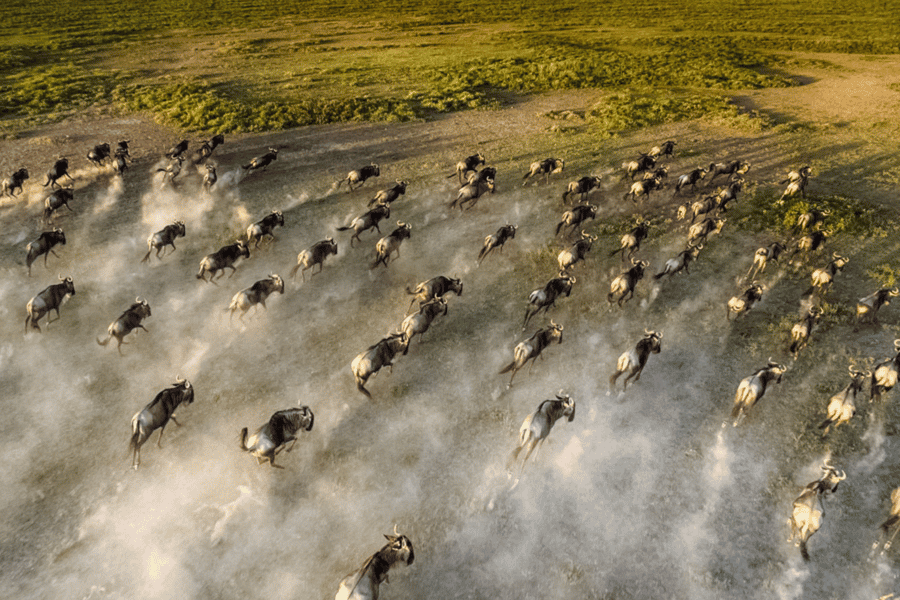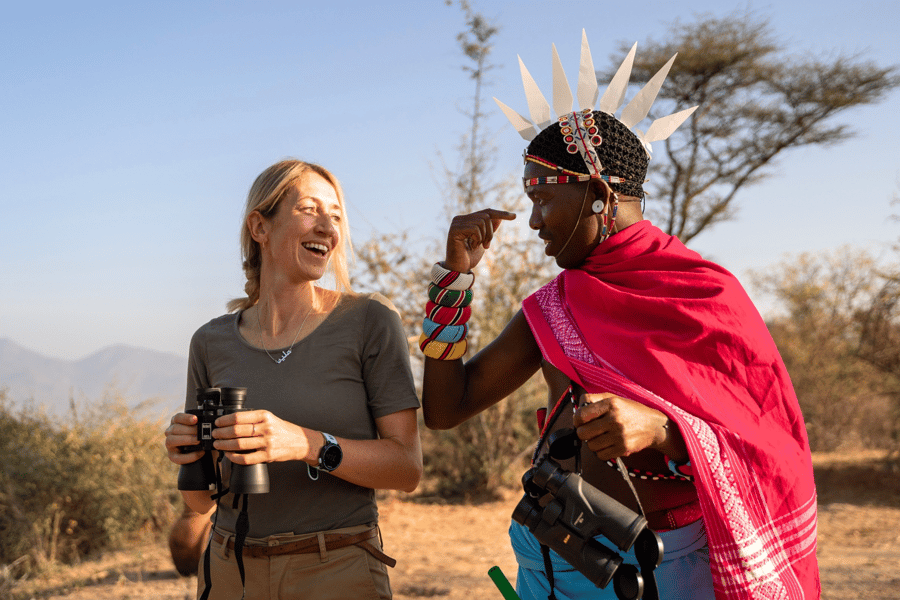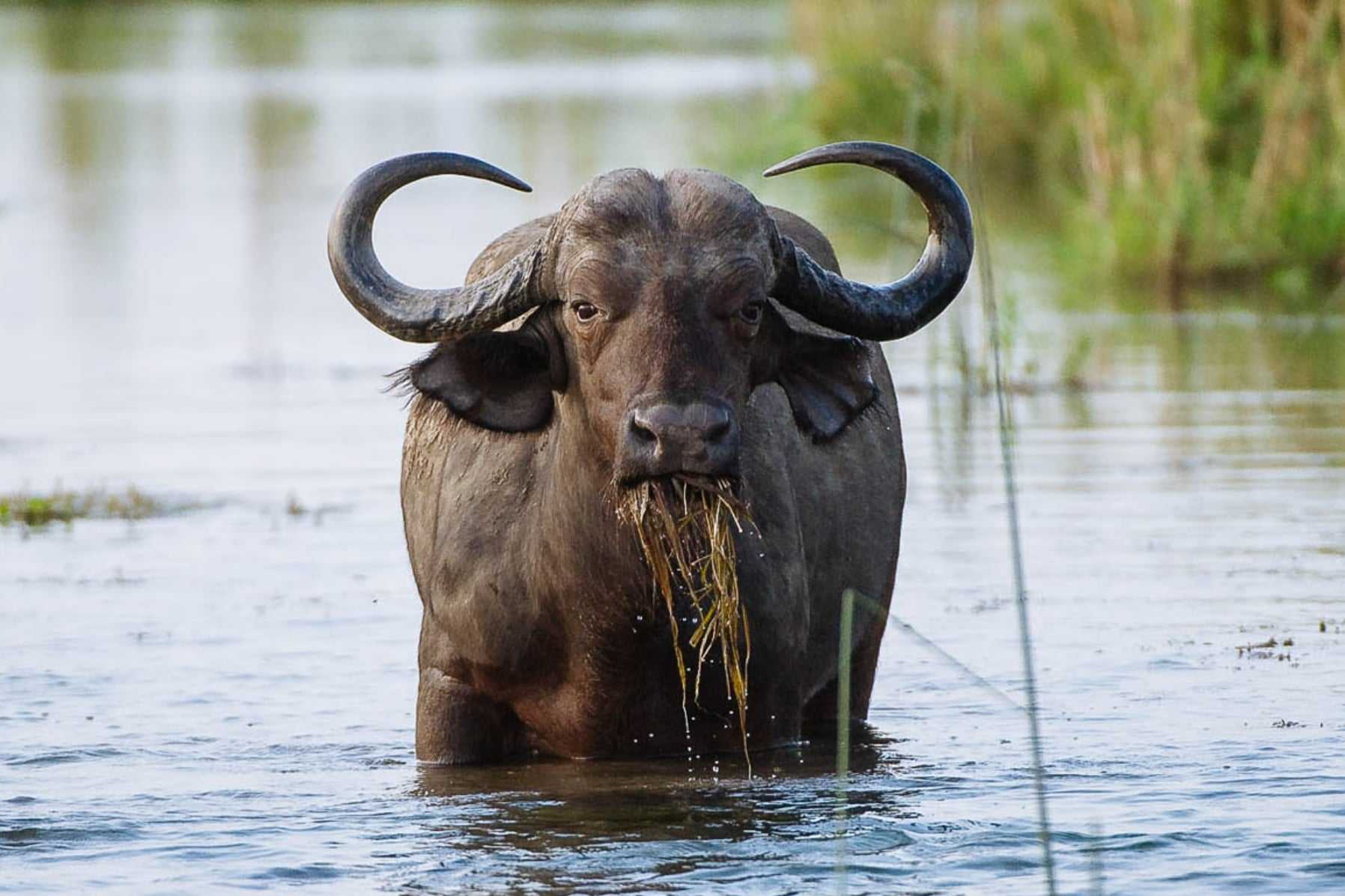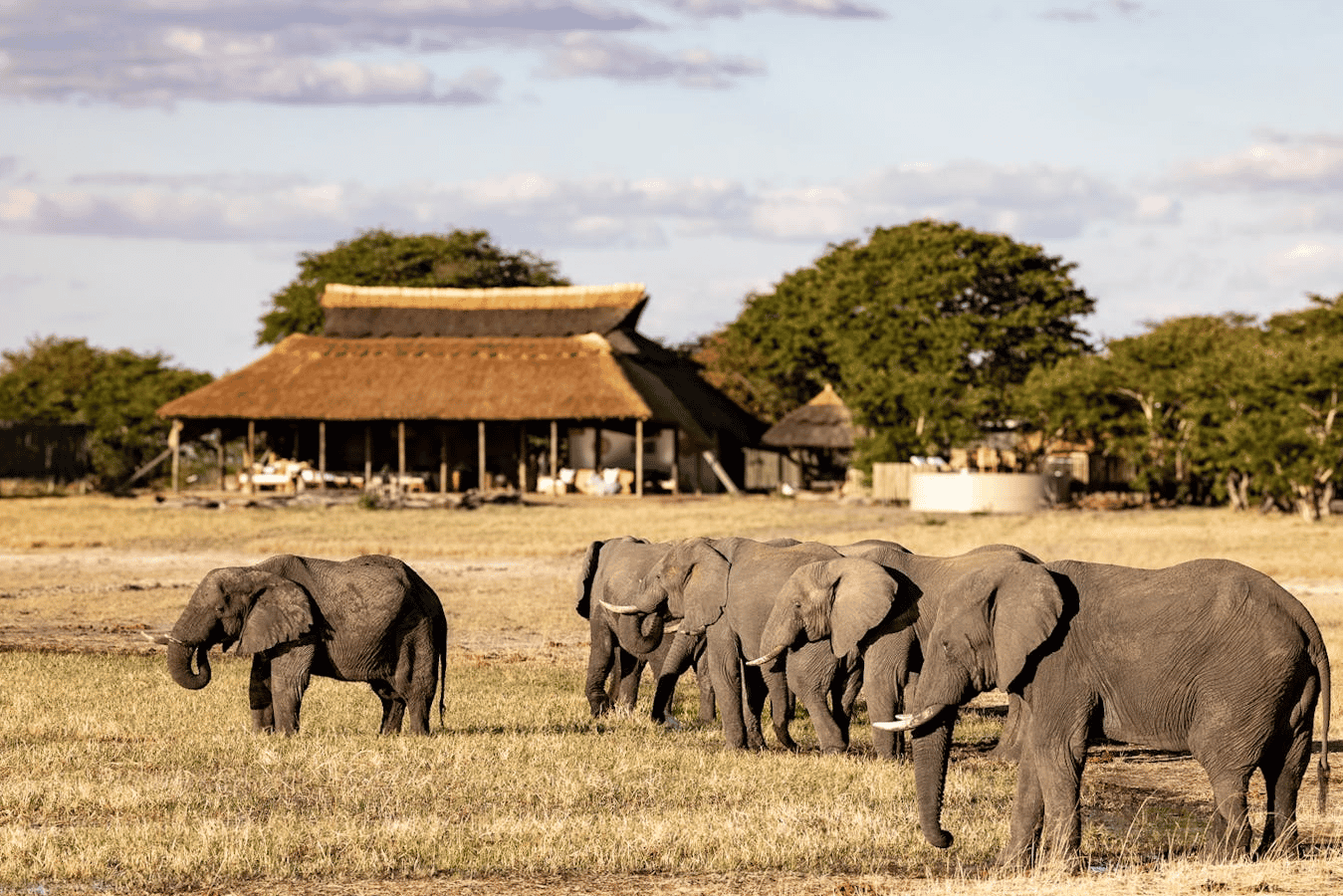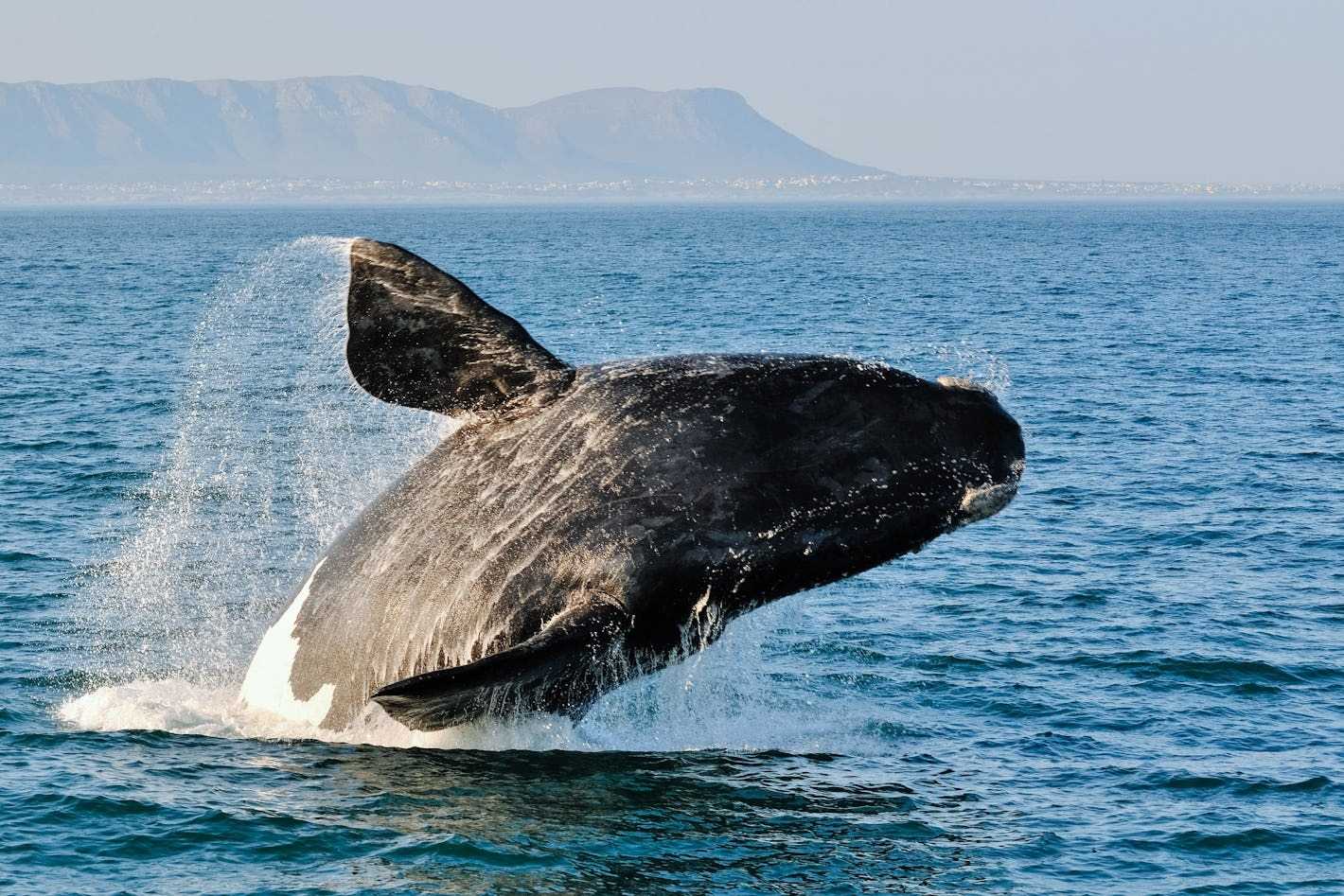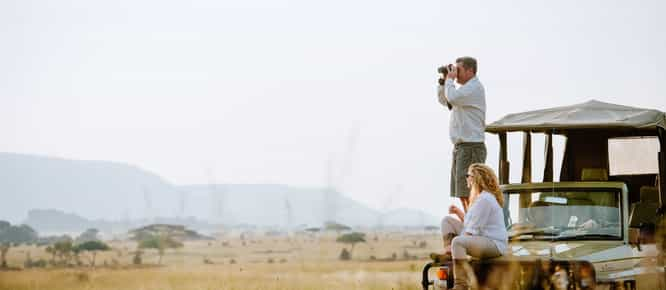A staple on any safari calendar, the Great Migration has been dubbed the most spectacular wildlife show on Earth. However, it’s often surrounded by a myriad of questions: why does it happen? When is the best time to see it? What would East African tourism be without it? In this blog, we’ll answer these questions and many more for the ultimate low-down on all things ‘Great Migration’.
What is the Great Migration?
Essentially, the Great Migration is the largest mass movement of mammals on the planet. A 1,000-kilometre, never ending cycle, the migration consists of around 1.5 million wildebeest, and hundreds of thousands of zebra and Thomson’s gazelle. This formidable formation of animals moves between the Serengeti in Tanzania and the Masai Mara in Kenya.
While no one has been able to conclusively answer the question of why the Great Migration takes place, there are a number of theories that could offer some insight into this natural phenomenon. Some believe the migration may be a result of simple instinct, with fossil evidence suggesting wildebeest have been roaming the plains of East Africa for over a million years – perhaps the urge to migrate is simply in their DNA.
Aerial photography has also revealed a remarkable level of organisation in the structure of the wildebeest herds as they start moving, mimicking that of a swarm, meaning that there is probably some degree of decision making happening between the animals. Of course, the lure of fresh grasses and plentiful water is a major factor. Some scientists believe the gnus are attracted to higher levels of phosphorus and nitrogen in the grass, which occurs in response to the rains. Decades of research has also shown that the exact timing and routes can vary from year to year depending on the rainfall, which further solidifies this theory. So far, so scientific…
The Great Migration, Kenya’s side of the story
The Great Migration occurs throughout the Serengeti-Mara ecosystem and, while the wildebeest spend most of their time in the Serengeti, the Masai Mara provides some truly incredible sightings of the migrating herds.
One of the most thrilling, heart wrenching and photo-worthy parts of the Great Migration, the iconic ‘River Crossings’ refer to the herds making the thunderous plunge across the Mara River on the border of Tanzania and Kenya. This is when the Kenya migration season really begins.
While the exact timing varies from year to year, the herds usually begin gathering along the banks of the Serengeti side of the Mara River around mid-June, where they summon the courage and energy to make a life-threatening journey across the treacherous waters. The crossings really get going in full force in July and continue into August and September. The lucky animals who make it across to the Masai Mara are rewarded with fresh water sources and plentiful, juicy grasses. After as little as a few weeks spent munching and refuelling, the wildebeest repeat the journey back across the Mara River, usually between October and November.
Top tip: Combing your Great Migration experience in Kenya with a Tanzania safari is a fantastic way to expand your East African adventure.
Approximately 250,000 animals die every year during the Great Migration, some from fatigue or illness, but most at this crucial crossing where hungry Nile crocodiles lie in wait and predators prowl along the banks. You’ll also see Marabou storks and vultures flock to the river to feast on the fallen.
Happily, the months of July to October also happen to be some of the best for visiting Kenya in general, with postcard-perfect, cloudless skies and plenty of sunshine. This means you can easily combine a Great Migration safari with the country’s other superstars or lesser-known but wildlife-filled spots – check out our guide to Kenya’s hidden gems here.
The popularity of this time of year does however mean that you won’t be alone at the crossing points as many other camera-toting tourists will have the same idea. To combat this, October is one of our favourite months to visit the Masai Mara as there are fewer crowds but all the Great Migration safari action. And remember, the river crossings aren’t the be-all and end-all; it’s worth seeking out the herds as they graze and mill around amidst the Masai Mara’s vast grasslands.
Forming the western section of the Masai Mara National Reserve, the Mara Triangle is one of the best places to witness the river crossings, while also having far fewer vehicles in comparison to the eastern Masai Mara. But whichever one of our camps or lodges you choose, rest assured that you’ll be in the hands of expert guides who know how to track the herds and find incredible sightings.
Where to stay
Across the Masai Mara, there are some truly fabulous places to stay, many of which ensure you’re always close to the migration action. We’ve compiled a list of some of our favourites to help you in your planning.
Governors’ Camp
One of the very first camps in the Masai Mara, Governors’ enjoys a prime spot on the banks of the mighty Mara River with views across the grassy plains. You’ll have a front row seat to all the migration goings-on and, with the camp’s world-class guides at the helm, the experience will be unbeatable.
Rekero Camp
Situated on the banks of the Talek River, a tributary of the Mara River, Rekero Camp is one of the first to get a look at the wildebeest as they plunge across the water into the reserve. Each tent is set apart from the next, offering private viewing of the spectacle before you.
Angama Mara Camp
Enjoy those classic, heart-stealing ‘Out of Africa’ views as great, snaking lines of wildebeest, zebra and gazelle fill the plains below. Ingeniously designed to ‘float’ over the Mara Triangle below, the canvas-and-glass tents are luxurious to say the least.
&Beyond Bateleur Camp
Enjoy prime viewing territory from Bateleur’s perch on the edge of the Oloololo escarpment, where the thrilling migration scenes play out before you. Their guides know everything there is to know about the behaviour of the herds, and they’ll have you amongst them in no time.
Emboo River Camp
As the name suggests, you couldn’t be closer to the spectacle of the river crossings from this eco-conscious spot and their electric vehicles mean you’ll be as incognito as possible. The view couldn’t be more spectacular from your tent!
How to see the Great Migration
Typically in an open-top 4×4 vehicle, you’ll be whisked off on a game drive (many camps also offer full-day drives during migration season) and your guide will use his or her tracking skills and radio communication to take you right into the middle of the herds. Depending on your location, they might also choose a good spot near the Mara River or one of its tributaries to take in the thrilling river crossings.
Walking safaris are also available in the conservancies and at certain properties, where you might join your guide or a Maasai warrior to explore the area and its many fascinating elements on foot. You’ll be able to witness elements of the migration in a quiet, uncrowded way, but don’t expect to get anywhere close to the thronging herds.
A hot air balloon ride is one of the most incredible ways to see the Great Migration – and from a whole new perspective! Taking off at dawn, you’ll rise above the savannah, silently maneuvering above the snaking lines of gnus, zebra and gazelle. You may even be able to see a river crossing from the air during the hour-long flight. Your experience will end with a champagne breakfast in the wild. It’s worth noting that a hot air balloon flight is completely weather-dependent and it’s also wise to book well in advance.
The role of the Great Migration
The Great Migration is actually a critical ecological process that helps to maintain the health of the Serengeti-Mara ecosystem. As the herds move across the grasslands, stopping to graze when needed, they trim down the taller growth and fertilise the soil with their scat, which supports a diverse array of plant life. Wildebeest (along with zebra) are often nicknamed the ‘lawnmowers of the Mara’ as they chew through the tall grasses, exposing tender new growth for the smaller antelopes who trail the larger herbivores. This intense grazing also prevents shrubs from overgrowing and assists with fire control due to far less ‘dry fuel’ on the plains. Essentially, without the Great Migration, the Serengeti-Mara area would likely see major ecological changes.
The Great Migration is also an incredible part of tourism in Kenya and a major pillar of Kenya’s economy. It’s estimated that the Masai Mara National Reserve attracts over 300,000 visitors each year and a significant amount of the revenue earned goes towards funding for schools, healthcare and infrastructure in surrounding communities. A portion of park entry fees also go towards conservation efforts.
Naturally, a gathering of herbivores on this scale attracts an abundance of big cats in search of a meal. The predators help keep the wildebeest population in check while the migration provides a vital food source.
Threats to the Great Migration
While the Great Migration is a well-established natural phenomenon, there are factors that pose a significant threat to its existence. Climate change is, of course, at the top of the list. In recent years, the region has experienced more frequent and extreme droughts, which decrease the availability of fresh grasses and waterholes, meaning the herds have less to eat and drink on their long, arduous journey. In some years, fewer wildebeest have ventured into the Masai Mara as pastures have dried up, or may return to the Serengeti sooner than usual. The Mara River, an integral lifeline for the migrating herds, is also at risk due to the declining health of upstream forests, which has led to reduced river flow in the dry season. At the other end of the spectrum, heavy out-of-season rains and floods have also been known to disrupt breeding and movement patterns. According to leading scientists, if the current trends persist, the Serengeti-Mara ecosystem may no longer be able to sustain the Great Migration.
Another major issue is the heightened population growth in areas around the Serengeti-Mara ecosystem, leading to the expansion of agriculture, settlements and fenced-off sectors. This is resulting in increasing habitat fragmentation and the severing of historical migratory routes. Records indicate that Kenya once had multiple distinct wildebeest migration corridors but all except the Serengeti-Mara route have collapsed, primarily due to human encroachment.
The Great Migration & conservation
Despite the factors working against the Great Migration, there are a number of elements at play that work towards its continued success. Fortunately, the core region where the migration takes place is largely under protection. Along with the Serengeti, the Masai Mara (covering an area of 1,510 square kilometres) forms an expansive area that has been set aside and protected for the safe movement of wildlife for decades.
Additionally, the network of community-owned conservancies on the outer edges of the reserve add approximately 300,000 acres to the total protected area. There has also been incredible work done in the creation of wildlife corridors in areas where animals historically migrated outside the park boundaries, reconnecting pieces of the landscape that had been closed off.
In order to ensure the protection of the migrating herds, both the government and NGOs have ramped up anti-poaching measures including the introduction of tracker dogs and surveillance technology.
The involvement of local communities has also been pivotal in furthering conservation efforts. Over 14,500 landowners are directly involved in areas surrounding the Masai Mara, while many lodges and camps also employ local people and feed back into community projects. This gives the Maasai people a strong stake in protecting migrating wildlife. There are also programs in place to compensate for livestock losses due to predators in the area.
There is also a great deal of work being done to preserve the Mau Forest (the source of the Mara River) and ensuring the river continues to flow even during dry spells.
Now that you’ve heard all about the Great Migration in Kenya, what to expect, where to go and exactly how it fits into the greater scheme of things, why not start planning your own trip to see it all for yourself. If you’re looking for more info, check out our blog on the best time to see the Great Migration or have a look at Africa’s top five migrations.
